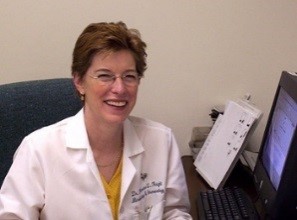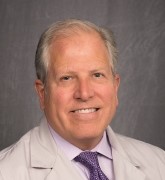Thesis Research Projects
Extracellular Vesicles in Health and Disease
Mentors: Tom Gallagher, PhD and Gopal Gupta, MD
Research Interest: Our primary research interests are in virology. We specifically focus our attention on entry and pathogenesis of enveloped viruses, particularly human pathogenic coronaviruses, such as the Severe Acute Respiratory Syndrome (SARS) and Middle East Respiratory Syndrome (MERS) coronaviruses. We also study transmission of extracellular vesicles and compare and contrast how enveloped virus and extracellular vesicle mediated the transfer of cytoplasmic contents between cells.
Extracellular Vesticles in Health and Disease
Extracellular vesicles (EVs) are ubiquitous, submicroscopic, membrane-delimited particles that are continuously secreted from both healthy and diseased cells. They accumulate in bodily fluids and may be useful “biomarkers” of patient health status. While the detailed structures and functions of EVs remain obscure, recent findings indicate that EVs transmit RNAs and proteins between cells in the body, and therefore are agents of intercellular communication. These intercellular transfers may be clinically relevant – indeed there is compelling evidence that EVs have therapeutic potential in cardiovascular disease. We have developed sensitive assays to measure EV-directed intercellular protein transfers. Projects include: (1) identifying EV components facilitating or restricting intercellular transfers, (2) characterizing the tissues and cells targeted by transfer-competent EVs, and (3)determining the relationships between EV cargo delivery into target cells and EV-mediated therapeutic activities in mouse models of human disease. These projects link EV molecular cellular biology investigations with those aimed at evaluating EVs as potential therapeutic agents.
 |
Thomas M. Gallagher, PhD Professor |
 |
Gopal Gupta, MD, FACS Associate Professor |
Decontamination of Clostridium Difficile Spores
Collaborators: Adam Driks, Ph.D. and Stuart Johnson, M.D.
Clostridium difficile contamination is widespread in hospitals, significantly increasing the risk of infection for susceptible patients. We seek to reduce this risk by developing chemistries that remove C. difficile from hospital environments which are safe and easy to apply, and do not present additional risks to patients.
 |
Adam Driks, PhD ProfessorMicrobiology and Immunology PhD, Brandeis University adriks@luc.edu CTRE, Room 217 |
 |
Stuart Johnson, MD, FIDSA, DTM&H ProfessorMedicine Infectious Disease |
The Microbiome of Ocular Surface Diseases
We are studying the ocular microbiome and its role in floppy eyelid disease (FES), Steven’s Johnson Syndrome (SJS), graph vs. host disease (GVHD) and dry eye disease (DED). The eye contains few bacteria compared to other parts of the body, but we have developed robust methods to interrogate the microbiome in this body site. Preliminary results have found that normal eyes tend to have a Lactobacillus/Streptococcus microbiome or a microbiome with lots of Corynebacterium. We have found that patients with SJS have much more Staphylococcus than other patients or healthy eyes, while GVHD patients look similar to healthy individuals and FES and DED are dominated by Corynebacterium. We are currently studying the viability and stability of these microbiomes longitudinally.
 |
Michael J. Zilliox PhD Assistant Professor |
 |
Charles Bouchard, MD Professor |
Urinary Microbiome
We have projects working on the urinary microbiome in healthy women and women with bladder, vaginal or kidney disorders. Most women have Lactobacillus in their urine and most women’s bladders have a dominant bacterial genera that accounts for >50% of the bacteria that are detected. We have also found that many bacterial genera can be present, such as Staphylococcus, but at a much lower frequency. In chronic kidney disease (CKD), we have found that CKD patients have more diverse microbiomes than other patients. This may explain why these patients are more susceptible to infections and other clinical outcomes, and we are currently exploring those opportunities.
 |
Michael J. Zilliox PhD Assistant Professor |
 |
Holly Mattix-Kramer, MD, MPH Associate Professor |
Association of NPC1L1L Polymorphisms with HCV Infection Outcome
Mentors: Susan Uprichard, PhD and Scott Cotler, MD
Genetic polymorphisms within IL28B are associated with HCV clearance and treatment response; however, these associations do not account for all the variability in infection and treatment response. We identified the host cell cholesterol uptake receptor NPC1L1 as an HCV entry factor. HCV sensitivity to NPC1L1 inhibition correlates with cholesterol levels within the viral particle. If HCV uptake is mediated by NPC1L1 cholesterol uptake activity, then NPC1L1 SNPs associated with high/low cholesterol absorption may also affect HCV infections. Thus, we are studying the impact of NPC1L1 genetic polymorphisms on cell permissiveness to HCV infection as well as infection and treatment outcomes. We want to determine if NPC1L1 SNPs alter permissiveness of cells to HCV infection and/or correlate with HCV spontaneous clearance, and/or treatment response.
 |
Susan L. Uprichard, PhD ProfessorMedicine, Hepatology Microbiology & Immunology PhD, Harvard University suprichard@luc.edu CTRE, Room 335 |
 |
Scott Cotler, MD Professor |
Clostridium Difficile Ecology in the Gut
Collaborators: Adam Driks, PhD and Dale Gerding, MD
Ingestion of C. difficile spores is critical to establishing an infection, yet the fate of the spore in the gut and its role in adhesion to the gut epithelium is unknown. It is very likely that C. difficile cells exist within a biofilm in the gut. To begin to address this question, we will search for conditions in vitro that stimulate C. difficile biofilm formation, and characterize any resulting extracellular matricies.
Mechanisms of Clostridium Difficile Persistence
Colonization of the gut by C. difficile spores is critical to establishment of disease. Possibly, it is also important in disease recurrence, a growing problem in hospitals. Persistence of C. difficile spores in the gut could explain recurrence. To begin to address this possibility, we will analyze the molecular basis of spore-epithelium interactions.
 |
Adam Driks, PhD |
 |
Dale N. Gerding, MD, FIDSA Professor |
Mechanisms of Clostridium Difficile Persistence
Collaborators: Adam Driks, PhD and Dale Gerding, MD
Colonization of the gut by C. difficile spores is critical to establishment of disease. Possibly, it is also important in disease recurrence, a growing problem in hospitals. Persistence of C. difficile spores in the gut could explain recurrance. To begin to address this possibility, we will analyze the molecular basis of spore-epithelium interactions.
 |
Adam Driks, PhD |
 |
Dale N. Gerding, MD, FIDSA Professor |
Mechanisms Streptococcus Pneumoniae Pathogensis
Mentors: Andrew T. Ulijasz, PhD and Clinician TBD
Gram-positive pathogen Streptococcus pneumoniae is responsible for 25% of all preventable deaths in children under the age of 5, and the leading cause in the US of community acquired pneumonia-related deaths. Although S. pneumoniae is responsible for a considerable disease burden on society, it first resides as a harmless commensal in the nasopharynx, before disseminating into the host to cause a variety of infections under situations where one’s immune system is compromised. A key component of the success of the pneumococcus is its ability to avoid innate immunity via its polysaccharide capsule, which is its major virulence factor and defines the > 90 capsule-specific serotypes. As the current vaccine is composed only of a subset of these serotypes, it would be beneficial to identify new therapeutics for targeting all pneumococcal serotypes rather than a few. The goal of our research is to understand conserved molecular events that trigger the deadly switch from commensal to pathogenesis. Through this research we have discovered a novel pathway that we think is responsible for this key change in carrier state and involving capsule tissue-specific regulation. Excitingly, it appears this system is a novel macromolecular stressosome structure conserved in Gram-positive pathogens.
Project 1: Use ChIPseq next generation sequencing and standard biochemical methods to determine the regulation of SpxR, the key transcription factor in the pathway.
Project 2: Use super resolution microscopy and FRET to determine the “when and where” the signaling system is utilized.
Project 3: Determine the substrate binding specificity of the signaling complex using genetic and biochemical techniques.
 |
Andrew T. Ulijasz, PhD Assistant Professor |
Pathogenesis of HPV: Defining Viral and Host Factors that Determine Progression
Mentors: Susan Uprichard, PhD, James Cook, MD, Gail Reaid, MD, and Nina Clark, MD
Cancer is associated with human papillomavirus infection (HPV), the most common sexually transmitted infection in the US. There has been an increase in the incidence of HPV cancer in recent years but there are multiple questions that remain to be elucidated about the pathogenesis of HPV-associated cancer including the natural history of precursor anal dysplastic lesions, the risks associated with the development and progression of dysplasia, the contribution of various HPV serotypes to the development of cancer and the immunologic events that may impact progression of anal dysplasia to cancer. We are therefore studying persons at high risk for HPV-related cancer to assess the prevalence of anal neoplasia, and study host and viral factors associated with its development. Specifically, we obtain pap smears from high-risk persons to determine the prevalence of abnormal cytology, assess the subtypes of HPV present, and determine potential associations of demographic and clinical factors with the presence of dysplasia. Long term, we will then follow the patients with dysplasia to assess changes over time and assess whether microRNA profiles in blood or dysplastic tissue are associated with progression to cancer. These studies should provide a better understanding of the factors that contribute to the development of cancer and enable early recognition and management.
 |
Susan L. Uprichard, PhD Professor |
 |
James Cook, MD Professor |
 |
Gail Reid, MD Assistant Professor |
 |
Nina Clark, MD Professor |
Determining the Mechanism by which Probiotics Inhibit Inflammation
Mentors: Katherine L. Knight, PhD and TBD clinician
Macrophages are critical immune mediators and key players in the clearance of viral infections. This project will investigate how the model coronavirus, mouse hepatitis virus, affects the phagocytic activity of macrophages. Students will learn how to: isolate and propagate bone marrow-derived macrophages; analyze transcriptional activation in mock-infected and virus-infected macrophages; and evaluate how viral factors modulate the innate immune response in activated macrophages.
 |
Katherine L. Knight, PhD Professor |
Human Bladder Epithelial Culture System for Studying Host Pathogen...
Mentors: Phong T. Le, PhD, Beth Mueller, MD, FACS, MS
The human urinary tract (UT) provides critical mechanical barriers to infection; however, UT is one of the most common sites for bacterial infection. UT infections (UTIs) are initiated when uropathogenic Escherichia. coli. (UPEC) invade and colonize the superficial epithelial or bladder epithelial cells – the urothelial bladder cells (BUC) that line the bladder lumen. Entrance into BUCs allows UPEC to proliferate and establish intracellular bacterial communities. In response to the invasion and colonization, BUC responds by mounting innate and adaptive immune response leading to exfoliation of infected cells. This project will utilize primary human BUC to interrogate its interaction with host immune cells of the bladder, BUC-UPEC interactions and mechanisms by which UPEC escape immune response and cause recurrences of UTI.
 |
Phong T. Le, PhD Professor |
 |
Elizabeth Mueller, MD, FACS, MS Professor |
Characterization of Human Bidirectional T-Cells
Mentors: Makio Iwashima, PhD, Paula White, MD and Paul Jones MD, FACS
Infants have a suppressed immune system which makes them highly vulnerable to infections and limits their immune responses to protective and life-saving vaccines. Both adaptive and innate immune responses in infant are less effective than those in adult. To provide better health care for infants, understanding the cellular and molecular basis of how the ho infant immune system works is essential.
In our recent studies, we determine that antigen receptor stimulation of umbilical cord blood T cells promotes development of Foxp3+ T cells that are immunosuppressive and also express pro-inflammatory cytokines. Gene expression profiles show these T cells are distinctive group of T cells from previously known regulatory or effector T cells. Thus, we termed these T cells “Bi directional T cells” (BiT cells). In this study, we will determine if this unique group of Foxp3+ T cells are present in the children and adult human tissues and peripheral blood under normal conditions and test their functions.
 |
Makio Iwashima, PhD |
 |
Paula White, MD, FACOG Professor |
 |
Paul Jones, MD, FACS Associate Professor |
Microbiome of the Urinary Tract
Mentors: Alan Wolfe, PhD, Elizabeth Mueller, MD, and Amanda Harrington PhD
The current paradigm for urinary tract infections and other lower urinary tract disorders does not take into account evolving knowledge of the human urobiome, the microbial communities of the lower urinary tract. The NIH-funded Human Microbiome Project has shown that microbiome composition contributes to diverse health and disease states. Yet, these studies did not report on the urobiome, largely because reviewers believed the “bladder is sterile” dogma, which results primarily from use of standard urine culture-dependent methods that were optimized to detect E. coli. High throughput 16S rRNA gene sequencing and an enhanced urine culture method that we call Expanded Quantitative Urine Culture (EQUC) reveal bacterial DNA and live bacteria, respectively, in standard urine culture-negative samples. These studies have revealed associations between the female urobiome and post-instrumentation and post-operative UTI, urgency urinary incontinence (UUI) and response to overactive bladder treatment. Some Lactobacillius species are associated with lack of symptoms and protection against post-instrumentation UTI. These results are consistent with the probability that the human urobiome has protective capabilities and that disruption (dysbiosis) can result in disorders such as UTI.
The Loyola Urinary Education and Research Collaborative (LUEREC), co-directed by Drs. Wolfe and Mueller, is a trans-disciplinary translational research team composed of clinicians, basic scientists, clinical microbiologists, and members of both the Loyola Genomics Facility & the Center for Bioinformatics. LUEREC wants to know how the urobiome affects the health of women and men. Our primary hypothesis is that bacterial biodiversity exists in the bladders of normal women & that perturbations in this normal bacterial biodiversity may contribute to symptoms. In simpler terms, we wish to learn the answers to the following questions: Which bacteria are present in the bladder? How does the composition of the bladder microbiome compare to the microbiomes of the surrounding organs or surfaces, e.g. the urethra, vagina or perineum? Which bacteria are protective? Which ones are pathogenic?
Ongoing studies are designed to: (1) determine if EQUC outperforms the standard urine culture as a diagnostic tool for urinary tract infections, (2) distinguish the microbiome of the female bladder from that of the female urethra, (3) understand the daily dynamics of the urobiome in young healthy women, (4) determine when the urobiome becomes established in children, (5) characterize the urobiome of women with recurrent urinary tract infections and follow the effects of antibiotic treatments, (6) investigate the role of the urobiome in the development of kidney stones, (7) learn how members of the urobiome interact with each other, and (8) understand understudied uropathogens. We anticipate that the totality of these and other studies will facilitate a paradigm change in our understanding of urinary tract in health and disease.
 |
Alan J. Wolfe, Ph.D Professor |
 |
Elizabeth Mueller, MD, FACS, MS Professor |
 |
Amanda Harrington, PhD, (ABMM) Associate Professor |
Complement Component C4 in the Pathogenesis OF Sjögren’s syndrome
Mentors: Yee Ling Wu, PhD, Rochella Ostrowski, MD and Rodney Tehrani, MD
Sjögren’s syndrome is a systemic autoimmune disease with overlapping clinical features with diseases such as lupus. Low levels of complement C4 protein are often observed in Sjögren’s syndrome, and are associated with cryoglobulinemia and lymphoma. Genetic deficiency and low gene copy numbers of complement C4 have been shown to be an important risk factor for lupus. Activation of C4 protein during inflammation consumes C4 protein and mediates tissue injuries. We hypothesize that C4 genetic and protein polymorphisms are engaged in disease predisposition and in modulating the clinical presentation of Sjögren’s syndrome. We will analyze patient samples using accurate molecular assays for determining C4 gene copy numbers, immunoassays for activated complement protein products, and transcriptomic analyses to i) determine the cause of low C4 in Sjögren’s syndrome, and to ii) evaluate the utility of combining genetic stratification of C4 and new protein markers in the diagnosis and management of Sjögren’s syndrome.
 |
Yee Ling Wu, PhD Assistant Professor Microbiology and Immunology Ph.D. Ohio State University |
 |
Rodney Tehrani, MD Professor Medicine |
 |
Rochella Ostrowski, MD Associate Professor |
EPIC in the US: Is It Pathogenic?
Mentors: Gail Hecht and Neil Gupta, MD
A new comprehensive and rapid multiplex PCR assay for 22 enteric pathogens has revealed that enteropathogenic E. coli (EPEC), previously unrecognized as a common pathogen in the USA, is frequently identified in patients with diarrhea in the USA and even in healthy adults without diarrhea. This unexpected finding presents confusion regarding the role of EPEC in disease, therefore warranting investigation into the virulence properties of these strains. This project will isolate and characterize these clinical EPEC strains to provide insight into their pathogenic potential and thus help to inform clinical care of patients harboring these organisms.
 |
Gail Hecht, MD Professor |
 |
Neil Gupta, MD, MPH |
The Viral Response to Antiviral Therapies
Mentors: Bryan Mounce, PhD and Gail Reid, MD
Viruses notoriously gain resistance to antivirals, owing to their high mutation rates and rapid replication strategies. We are interested in understanding the molecular determinants of how viruses overcome antivirals, considering what changes occur to the viral genome, thus affecting the viral proteins, replication, and pathogenesis. We can use this information to understand how viruses infect a cell and replicate, as well as how we can prevent the emergence of antiviral resistance.
 |
Gail Reid, MD Assistant Professor |
 |
Bryan C. Mounce, PhD
|
Genetic Manipulation of Potential Uropathogens
Mentors: Karen Visick, PhD and Amanda Harrington, MD
Until recently, urine was believed to be sterile. Now, work from Loyola, in particular from the Wolfe lab, has demonstrated the existence of numerous microbes in urine. Some of these microbes may be “normal flora” bacteria, while others have been associated with the disease state. In collaboration with the Wolfe lab, our long term goals seek to understand the roles of specific urinary isolates in disease. To achieve these goals, we propose first to develop tools for the genetic manipulation of the urinary isolates. Then, we will mutate specific genes with the potential to be involved in virulence. Finally, through collaborations, we will develop assays of virulence to determine if the mutant bacteria exhibit reduced or loss of virulence.
 |
Karen Visick, PhD Professor |
 |
Amanda Harrington, PhD, D(ABMM) Associate Professor |
Determining how Variations in Virulence Factor Regulation Enhance the Pathogenesis of Clinical Isolates of S.Aureus
Research Interests: We investigate the molecular mechanisms underlying Staphylococcus aureus disease processes and bacterial evasion of the host immune response. For a bacterial pathogen to cause disease it often must: acquire metabolic resources from nutrient restricted environments; escape host immune defenses; produce virulence factors that damage host cells or usurp host functions; and/or use physical means to persist in inhospitable conditions. My laboratory aims to develop a better understanding of these pathogenic mechanisms in the bacterium Staphylococcus aureus.
 |
Francis Alonzo, PhD Assistant Professor |
|
Clinician TBD |
Polyamines in Cellular Processes
Mentors: Bryan Mounce, PhD and Nina Clark, MD
During viral infection, the interferon response is triggered to limit viral replication. One way the cell limits viral replication is by depleting polyamines, through the enzyme SAT1. SAT1 acetylates polyamines, reversing their charges and clearing them from the cell. The effect this has on the cell isn’t known, however. Thus, we are interested in determining how polyamines may impact cellular signaling and what impact this has on replication of diverse viruses.
 |
Nina Clark, MD Professor |
 |
Bryan C. Mounce, Ph.D Assistant Professor |
Polyamines in Viral Processes
Mentors: Bryan Mounce, PhD and Nina Clark, MD
Viruses rely on polyamines for translation of the viral genomes and to stimulate the RNA polymerase. However, precisely how polyamines are involved in these processes isn’t entirely understood. We are working to understand how polyamines affect these processes in diverse viruses like Zika virus, Coxsackievirus, enterovirus, and Rift Valley fever virus. Understanding how viruses rely on polyamines can inform how we can better treat viral infection with inhibitors, develop new inhibitors, or use combination therapies. We are also interested in how viruses evolve to overcome polyamine depletion, which has important implications for antiviral resistance.
 |
Nina Clark, MD Professor |
 |
Bryan C. Mounce, Ph.D Assistant Professor |
Disecting HIV-Host Interactions
Mentors: Edward Campbell, PhD, and Clinician TBD
We are interested in understanding the interactions occurring between HIV-1 and target cells that lead to, or prevent, productive infection. This includes understanding how cellular proteins, termed restriction factors, can inhibit HIV-1 infection, and how HIV-1 and other retroviruses can evade these restriction factors to replicate efficiently. We are also working to understand how HIV-1 interacts with cellular proteins to facilitate infection, specifically examining how HIV-1 engages the microtubule cytoskeleton and nuclear pore complex during infection.
 |
Edward Campbell, PhD Professor |
|
Clinician TBD |
Understanding the Mechanism of Amyloid Protein Transmission
Mentors: Edward Campbell, PhD and Clinician TBD
We are interested in understanding the “virus like” transmission of amyloid proteins that occur in neurodegenerative diseases. By understanding the mechanism by which these proteins, such as alpha-synuclein in Parkinson’s disease, spread from cell to cell, we hope to identify opportunities to arrest disease development in patients with Parkinson’s disease, Alzheimer’s disease and Huntington’s disease. We are currently examining how these amyloid proteins enter neurons and induce cellular dysfunction that ultimately drives the continued spread of these amyloid proteins and their associated pathology.
 |
Edward Campbell, PhD |
Inflammation Biosensor Development
Mentors: Edward Campbell, PhD, and Clinician TBD
We are interested in understanding how inflammation drives the pathogenesis of numerous human diseases. To this end, we have developed a novel biosensor which can monitor inflammation in mouse models of human disease. The ability to monitor inflammation in living animals may provide experimental tools with which to better understand and treat numerous human diseases.
 |
Edward Campbell, PhD Professor of Microbiology and Immunology |
